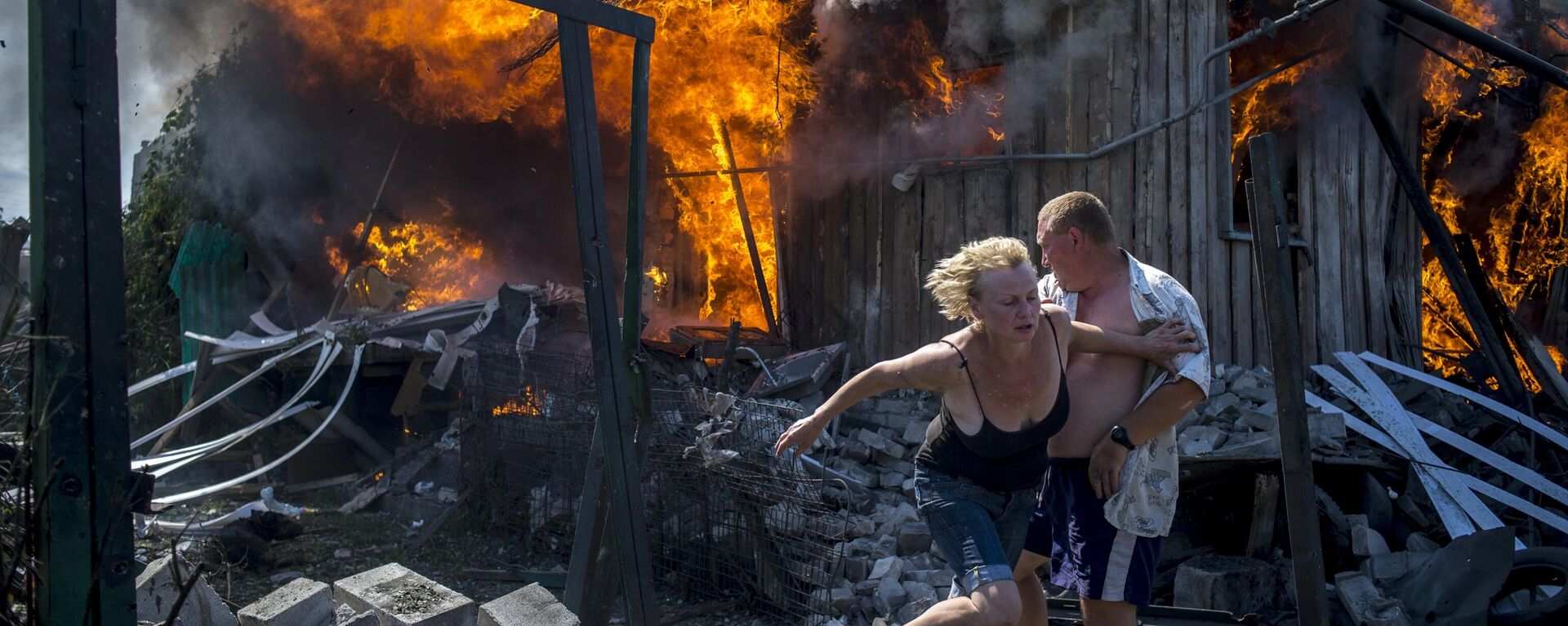War in Donbass: Key Moments From Eight-Year Conflict
09:30 GMT 16.04.2022 (Updated: 09:32 GMT 16.04.2022)

Subscribe
Eight years ago this week, Kiev kicked off its ‘anti-terrorist operation’ in Donbass. The fiercest battles of the war were fought between 2014 and 2015. After that, the civil conflict turned into a war of position, but troops and civilians alike continued to die in both Donetsk and Lugansk. The war claimed the lives of over 13,000 people.
6 April 2014: Seizure of the Ukrainian Security Service Building in Lugansk
This event would mark a turning point of the ‘Russian Spring’ – the widespread pro-Russian unrest in Ukraine which followed the February 2014 Western-backed coup d’état in Kiev. Fledgling militia forces in Lugansk seized the Ukrainian Security Service building in the city, arming themselves en masse with weapons from its large armoury.
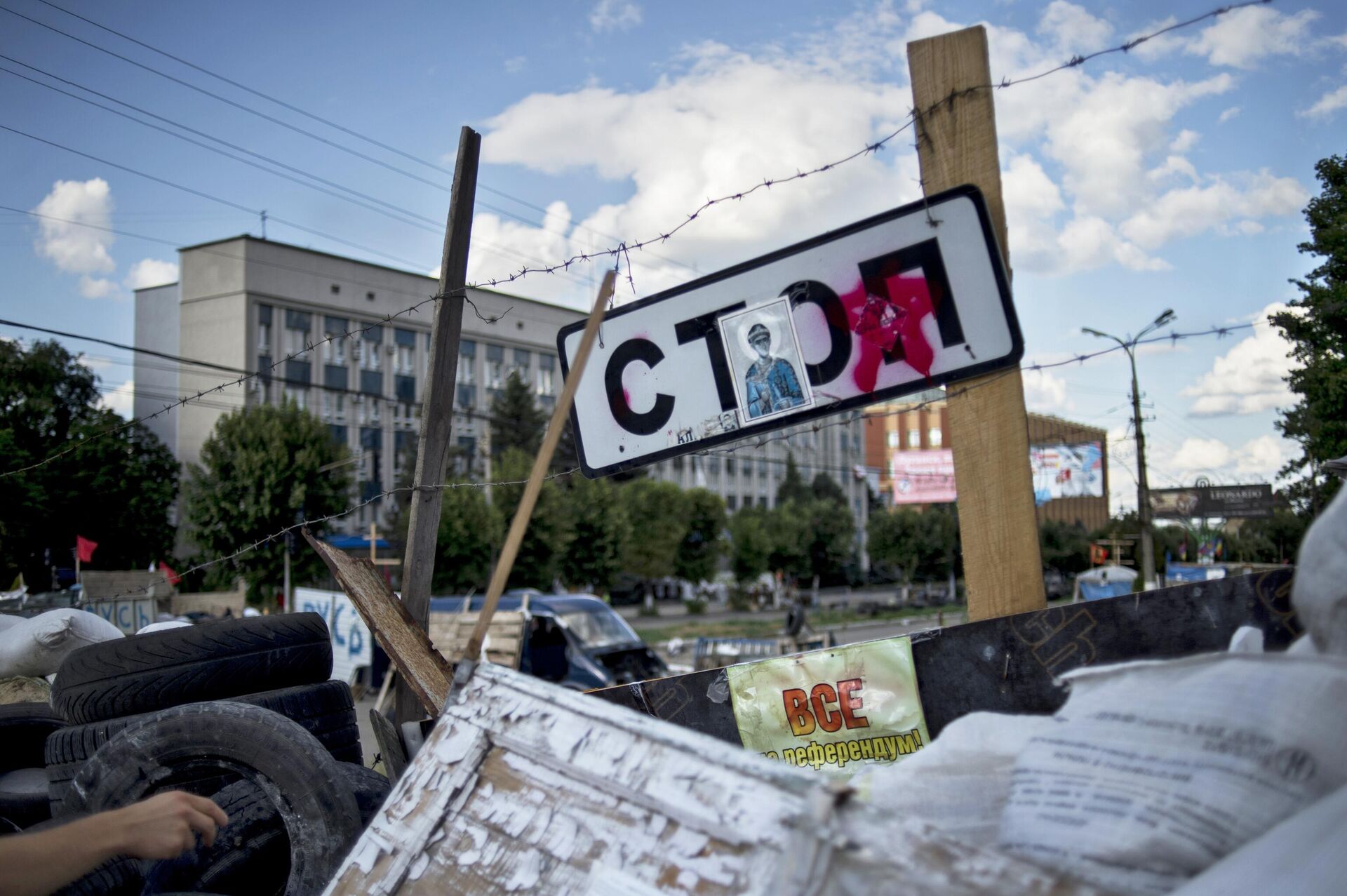
Barricade in front of the Ukrainian Security Services building in Lugansk, June 2014.
© Sputnik / Valery Melnikov
6 April 2014: Capture of Donetsk Administration and Start of the Defence of Slavyansk
The same day in neighbouring Donetsk, participants of a protest rally took over the building of the Donetsk Regional Council and the regional administration, formally proclaiming the Donetsk People’s Republic and creating the People’s Council on 7 April. The council adopted twin declarations on the sovereignty and independence of the DPR.
Several days later, on 12 April, a group over 50 local militiamen and Russian volunteer commander Igor Strelkov, a subscriber to pan-Slavic views, began the seizure of administrative buildings in Slavyansk in northern Donetsk region. Preparations for the defence of the city began.
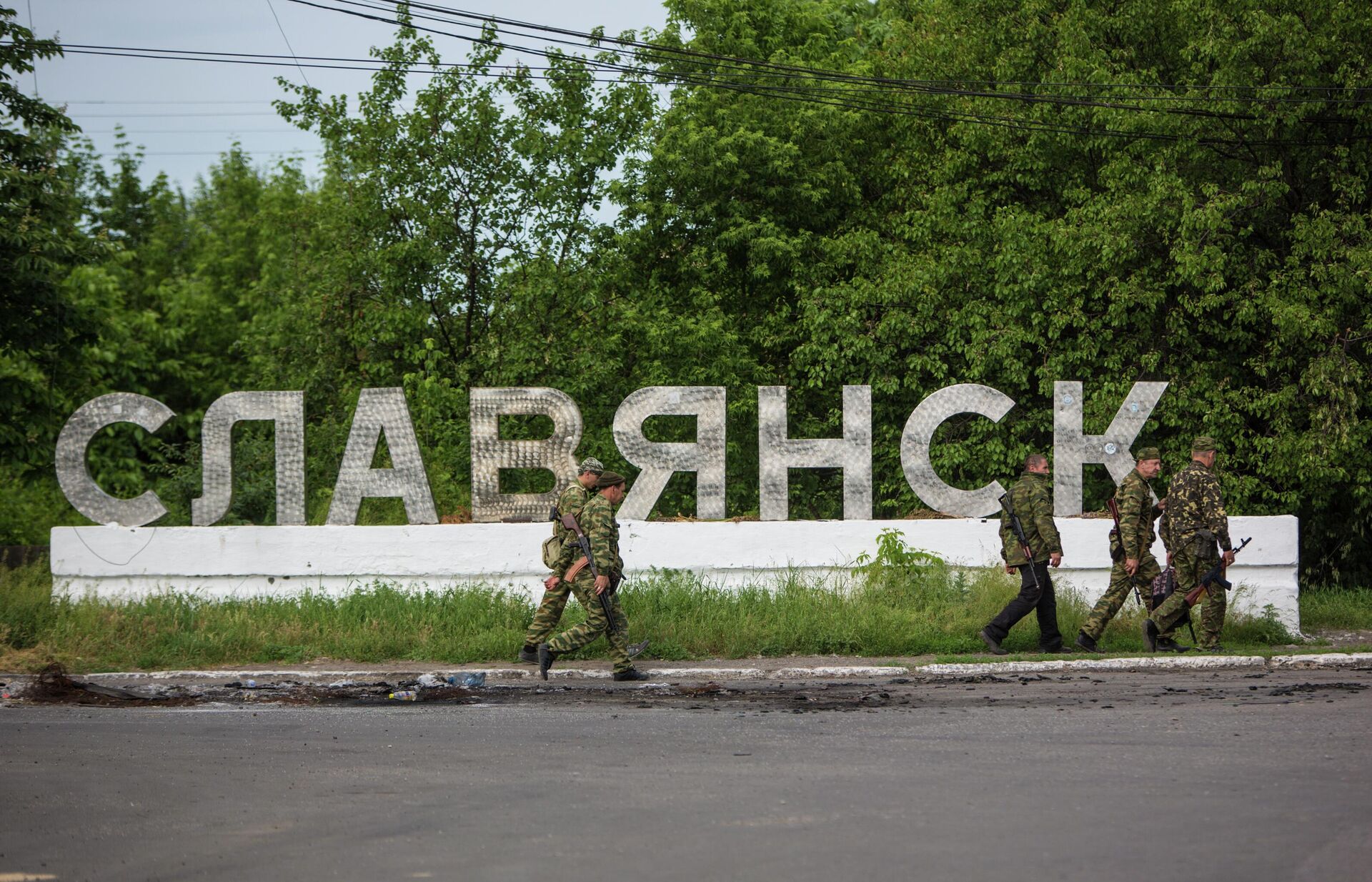
Donbass militiamen walk past a sign reading 'Slavyansk' along a road at the entrance to the city.
© Sputnik / Andrei Stenin
/ 13 April 2014: ‘Anti-Terrorist Operation’ Kicks Off in Donbass
On 13 April, the National Security and Defence Council of Ukraine signed off on the start of an ‘anti-terrorist operation’ (ATO) in Donbass, with acting President Oleksandr Turchynov – appointed to the role following the ouster of democratically-elected President Viktor Yanukovych, approving it. In essence, there was nothing ‘anti-terrorist’ about it. It was a military operation against the population of those eastern regions of Ukraine which did not support the coup in Kiev.
At about 9 am on the morning of 13 April, a vehicle containing Special Group Alpha Ukrainian Spetsnaz troops assigned to administrative buildings in Slavyansk was ambushed by militias. Kiev announced the start of an ATO in the city the same morning. Alpha Captain Gennady Bilichenko was killed, and three other Spetsnaz fighters were injured.

Barricades in front of the city council building in Kramatorsk, April 2014. Signs read "In Kiev, power in the hands of Fascist thugs," "Turchynov, take the tanks out of the streets of Kramatorsk," and "Shut up! And delight in democracy."
© Sputnik / Stringer
/ 2 May 2014: Assault on Slavyansk
This date is considered the real jumping off point to a full-fledged war in Donbass. Ukrainian forces made an attempt to storm Slavyansk, pushing into the city with air support. Some fortified DPR positions were taken, along with commanding heights in the area of Karachun, where artillery batteries were deployed. However, militia members managed to shoot down several enemy helicopters using MANPADs, killing five Ukrainian military pilots.
Left without air support, Ukraine’s internal troops curtailed their offensive. In all, nine Ukrainian troops were killed, with Donbass militia suffering one casualty and over a dozen injuries. The first Ukrainian military assault on Slavyansk ended in failure.
The city’s defenders reported that nationalist fighters from the Right Sector, a neo-Nazi political party and paramilitary group, had taken part in fighting for the city. The militants later confirmed their involvement.
At the Security Council, Russia demanded that Kiev “immediately stop this punitive operation and any violence against its own people, release political prisoners, and ensure the complete freedom of the work of journalists”.

Ukrainian troops near the village of Andre'evskoye outside Slavyansk, where local residents blocked a convoy of Ukrainian army armoured personnel carriers. 2 May 2014.
© Sputnik / Mikhail Voskresensky
/ 9 May 2014: Bloodbath in Mariupol
The Azov Sea coast city of Mariupol saw mass protests by residents opposed to the coup in Kiev. On 6 May, the first major confrontation between local militia members and Ukrainian nationalist battalions took place. In fighting with a national battalion created and financed by Ukrainian lawmaker Oleh Liashko, leader of the nationalist Radical Party, a militiaman was killed and the first defence minister of the self-proclaimed Donetsk Republic, Igor Khakimzyanov, was taken prisoner.
On 9 May, Ukrainian security forces opened fire on demonstrators, including pensioners who were out celebrating the anniversary of victory in the Great Patriotic War. Armed clashes broke out, with pro-Russian activists occupying a local police department building, and Ukrainian troops, including neo-Nazi Azov Battalion fighters, attempting to storm it. At least 13 people were killed in fighting, and many more wounded.
The confrontation in Mariupol became a major signpost on Kiev’s path toward a broader war.
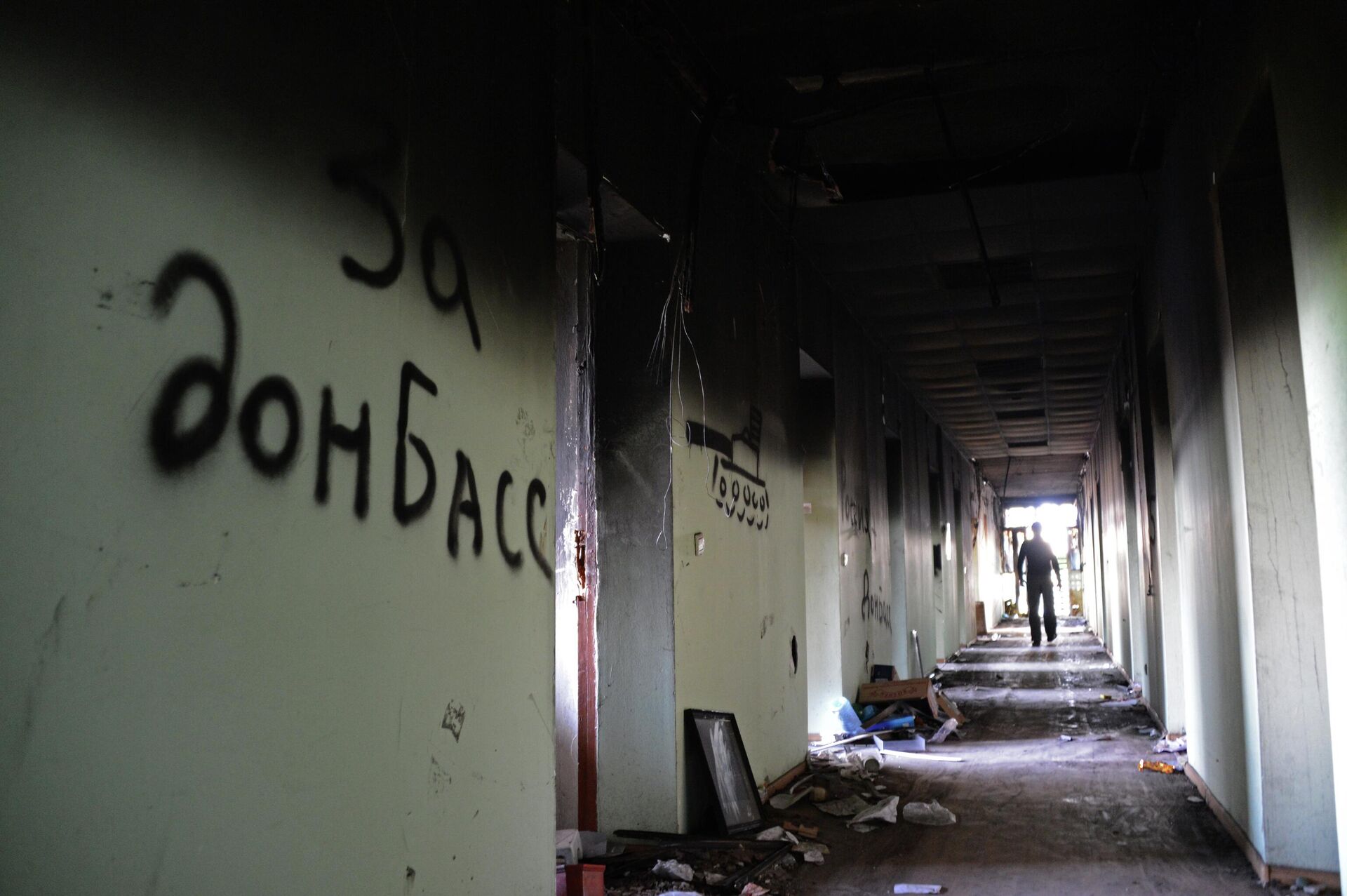
In the burned out building of the Mariupol City Council. May, 2014. Graffiti reads "For Donbass."
© Sputnik / Natalya Seliverstova
/ 26 May 2014: Donetsk Airport – Long-Running Meat Grinder
The battle for Donetsk Airport began on 26 May 2014, and continued until 21 January 2015, lasting a total of 242 days. The pre-coup government spent over $875 million renovating and expanding the airport just before the conflict began, with the facility almost completely gutted by the time the fighting was ended.
On 26 May 2014, DPR militia forces entered the airport, gaining a foothold in one of its terminals. Kiev responded with airstrikes, attacking lightly armed volunteer fighters with Su-25 ground attack aircraft and Mi-24 helicopter gunships, and pounding them from the ground using anti-aircraft guns and grenade launchers. Facing heavy losses, the militiamen pulled back.
Fighting of varying intensity would continue for eight months. The militias finally drove Ukrainian forces out of the area in January 2015. The DPR estimates that nearly 600 Ukrainian troops died in fighting for the airport. Kiev, for its part, claims that about 800 militia were killed, and that as many as 2,000 were wounded.
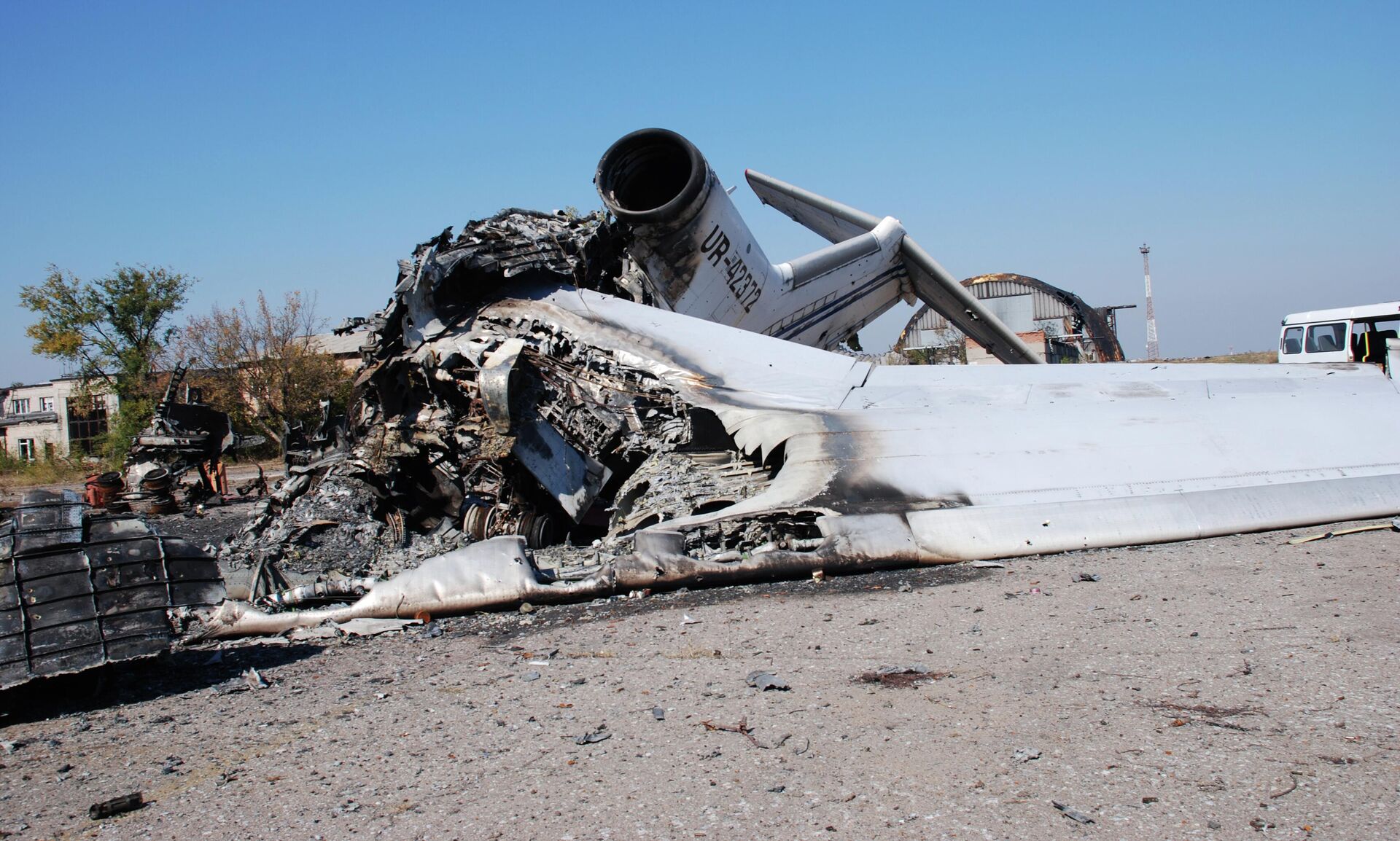
Aircraft wreckage at the Donetsk International Airport. October 2014.
© Sputnik / Gennady Dubovoy
/ 2 July 2014: Airstrike on the Lugansk Regional Administration
On 2 July, Ukrainian forces carried out airstrikes on the building of the former Lugansk regional administration, the parking lot in front of it, and the park named after the Heroes of the Great Patriotic War nearby. Ukrainian forces fired 20 bombs and missiles in total. The park is surrounded by residential buildings, and a kindergarten and playground (containing children at the time of the attack) is located directly behind the administration.
Lugansk People’s Republic government personnel were in the building at the time of the strike. Eight people were killed, with 28 others wounded by shrapnel. The LPR’s leaders declared that then-head of the republic Valery Bolotov and his entourage were the targets.
The Ukrainian side denied that any air raid had taken place, and suggested that the building was rocked by an explosion caused by the “inept handling of small arms and explosives” by militiamen. Another version claimed that a MANPAD missile fired at a Ukrainian aircraft scraped an air conditioner on the building’s façade and then slammed into the building.
On 3 June, Organisation for Security Co-operation in Europe (OSCE) observers concluded that the administration building was hit by unguided rockets fired from an aircraft.
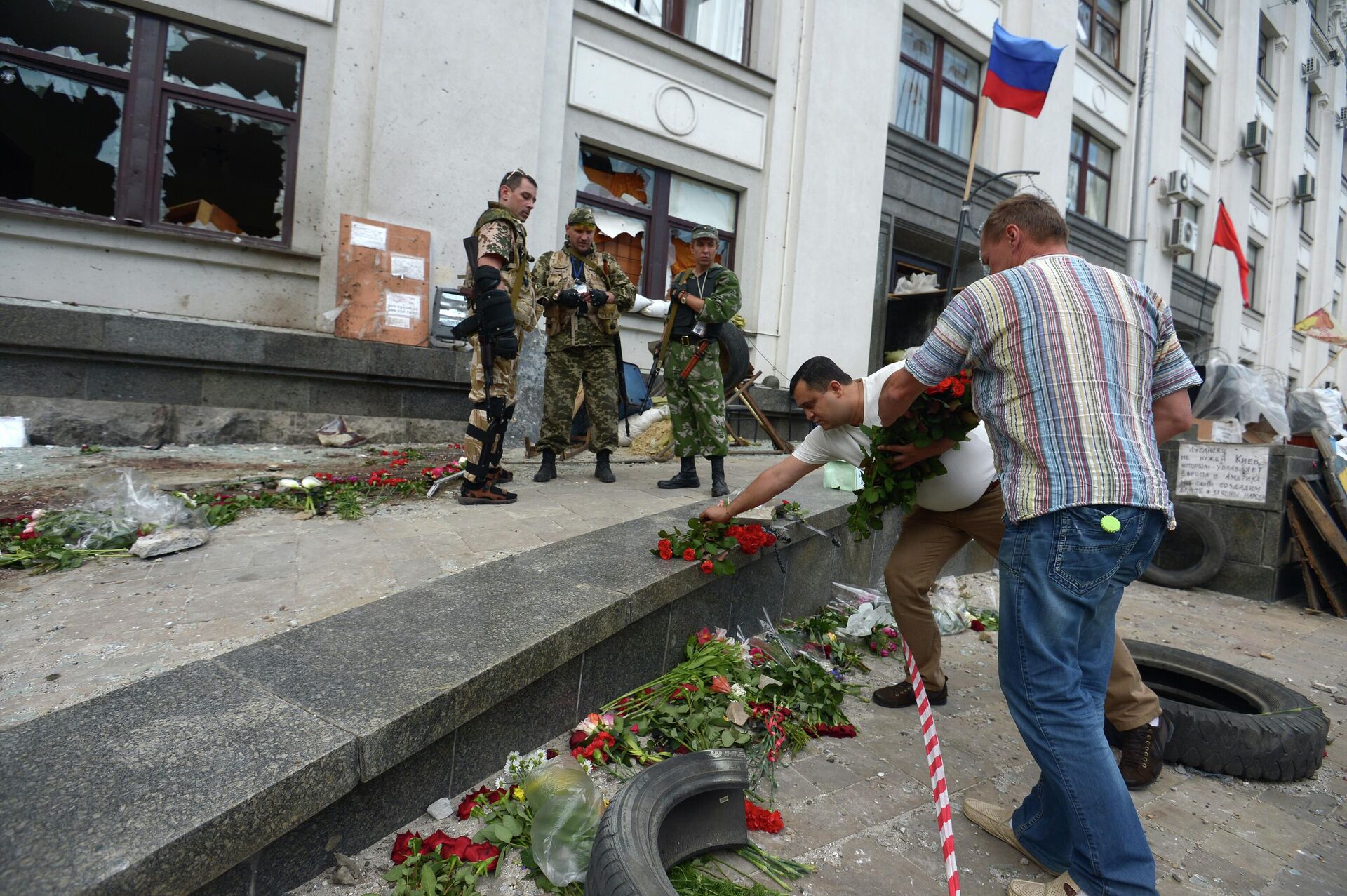
Lugansk residents lay flowers before the building of the regional administration after a Ukrainian airstrike. June 2014.
© Sputnik / Evgeny Biyatov
/ 5 June 2014: Battles for Lugansk Airport
In June, fighting broke out between Ukrainian security forces and the Donbass militias at Lugansk Airport. Kiev saw the airport as a key goal in its broader plans to capture the city of Lugansk itself.
By the end of August 2014, the airport was being defended by between 1,500-2,000 Ukrainian troops. At the same time, LPR forces had been strengthened, and the garrison at the airport was surrounded. On the night of 1 September, Ukrainian forces which had held the airport for 146 days blew up its runway (a strange measure, given that the Donbass militias had no air forces of their own) and retreated. The airport has been under the complete control of the LPR ever since.
The liberation of the airport frustrated Kiev’s plans to capture Lugansk and break through to the self-proclaimed republic’s border with Russia through the settlement of Novosvetlovka, which would have allowed them to block the Lugansk-Krasnodon highway.
2 July 2014: Bombardment of Stanitsa Luganskaya
On 2 July, Ukrainian air power bombed the settlement of Stanitsa Luganskaya. Vladislav Bylous, chief of the local administration, said the first strike took place at 11 am, destroying the police station, the courthouse, and two other buildings. Three people were killed. A second strike followed, killing nine and injuring 11 others. Among the dead were a five-year-old boy, who had his legs blown off, and his father. Ukraine alternated between denying the incident took place and blaming Donbass forces, claiming they used artillery to strike the town.

Funeral ceremony for Vladimir Yermilov and his son Vanya. The two were killed during Ukrainian shelling of Stanitsa Luganskaya. July 2014.
© Sputnik / Valery Melnikov
5 July 2014: Siege of Slavyansk
Throughout the spring and summer of 2014, Slavyansk faced constant shelling, with scores of civilians killed and, by early July – well over half of its pre-war population of 143,000 had been forced to flee. In an appeal on 4 July, commander Strelkov said that “over 30,000 people” remained trapped in the besieged city. After three months of fierce fighting involving over 15,000 Ukrainian troops and between 800 and 1,000 militiamen, the militias was forced to evacuate Slavyansk, with the city occupied by the Ukrainian army since that time. Part of the militia regrouped in Kramatorsk, while others travelled to the city of Donetsk.

Military equipment of militia forces who broke out of the city of Slavyansk after it was surrounded by Ukrainian security services drives through a checkpoint on the entrance to Donetsk. July 2014.
© Sputnik / Mikhail Voskresensky
Summer 2014: Zelenopolye and the ‘Southern Cauldron’
In June 2014, Lugansk militiamen took control of about 100 km of the border between the region and Russia. The border was opened to the free movement of volunteers, cargo, and equipment. Kiev sent troops up from Mariupol to try to regain control of the frontier area.
When a Ukrainian group of 5,000 troops and over 100 vehicles entered an area between Zelenopolye and Saur-Mogila, militiamen sprung a trap, blocking Ukrainian forces in a cauldron, leaving them unable to retreat toward Mariupol, while blocking the path to Lugansk.
Ukrainian forces spent a month in the cauldron, with the militias lacking the resources to destroy the enemy, but having just enough manpower to keep them surrounded. For a month they shelled the Ukrainian grouping with artillery and awaited their surrender. Ukrainian high command forbade surrender, and made several failed attempts to break the forces out of encirclement.
The southern cauldron took its final shape after the militia garrison was evacuated from Slavyansk. Fighters from this direction significantly strengthened militia positions in the city of Donetsk and blocked the Ukrainian military’s room for manoeuvre, stopping them from breaking through to the southern cauldron, as well as Donetsk and Lugansk.
Ukraine is estimated to have lost between 3,000 and 3,500 servicemen in the southern cauldron, with the militiamen believed to have lost between 500 and 1,000 fighters in the operation.
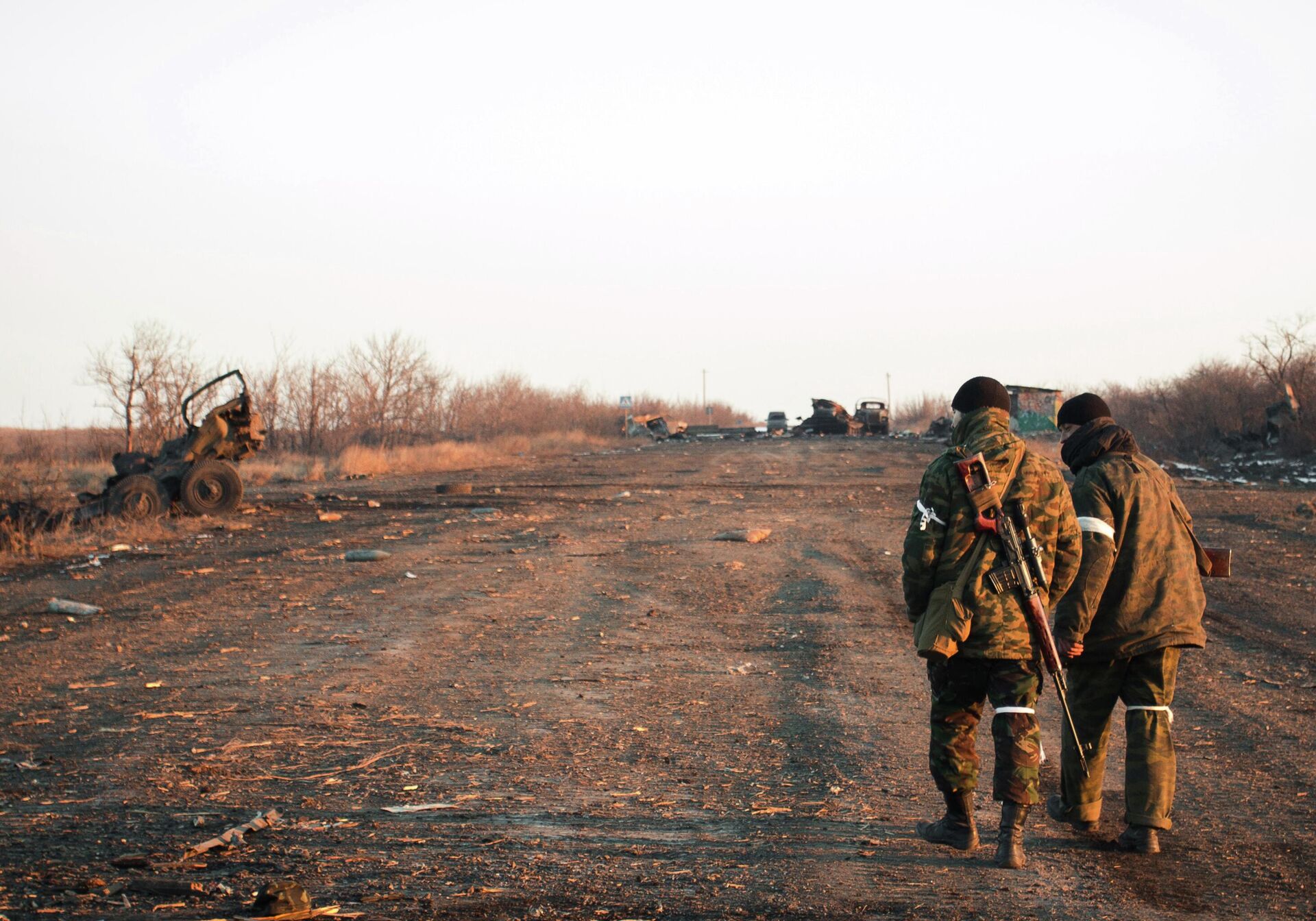
Donetsk People's Republic militiamen in the village of Logvinovo in the Donbass. In the background is Ukrainian military equipment destroyed in the course of fighting.
© Sputnik / Dan Levy
Summer 2014: Battles for Saur-Mogila
The summer of 2014 also witnessed heavy fighting between Ukrainian forces and Donbass militia for Saur-Mogila, a strategic height in Donetsk’s Shakhtyorsky district.
During the Second World War, in the course of Donbass strategic offensive, fierce battles raged for Saur-Mogila, with thousands of Red Army and Wehrmacht troops killed there in brutal fighting in the summer of 1943. In the 2014 conflict, the strategic height – serving as an observation post and firing position, again acquired great importance for the warring parties.
In mid-July 2014, militia forces controlling the height played a major role in the encirclement of the 5,000 strong grouping of Ukrainian troops trapped in the southern cauldron. The height was the only route through which the encircled units could receive reinforcements.
The heaviest battles raged in July, with both sides periodically announcing that they had taken control of the strategic vantage point. By the end of August, Ukrainian forces retreated and joined the rest of the forces surrounded in the southern cauldron.
Control of Saur-Mogila allowed DPR troops to reach the Sea of Azov and, eventually, to take control of the town of Novoazovsk, along with a 40 km slice of the coast.
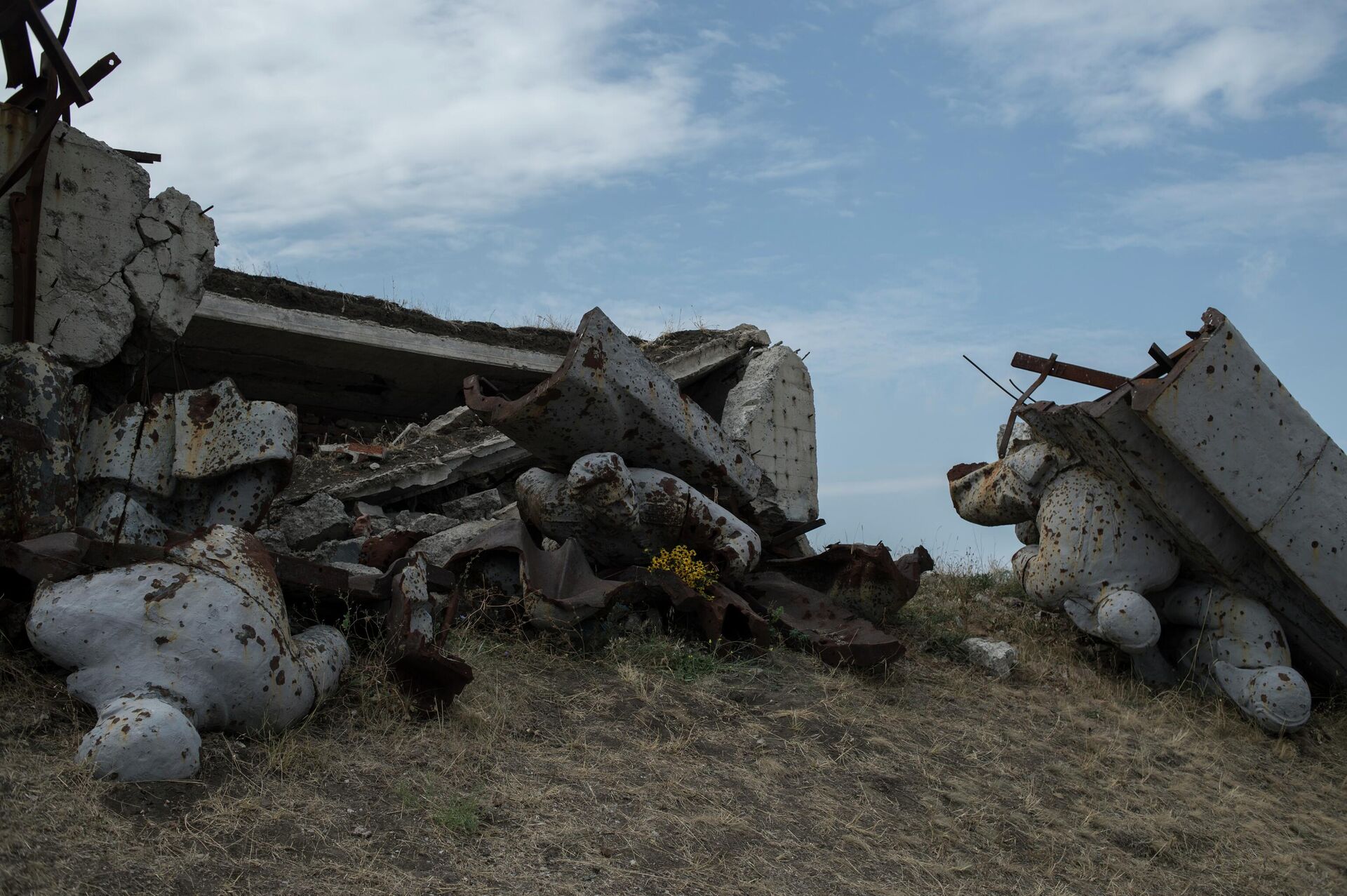
Ruins at the WWII memorial on Saur-Mogila hill in Donetsk. The memorial was destroyed in heavy fighting between Donbass militias and Ukrainian forces in 2014.
© Sputnik / Valery Melnikov
/ 10 August 2014: Battle for Ilovaisk
Three weeks of fighting in eastern Donetsk led to the formation of the so-called ‘Ilovaisk cauldron’, named after the small town of the same name, which contains a major rail junction. For Kiev, the area was an important staging ground from which a foothold for an offensive to the east could be formed. On top of that, taking control of the territory would cut off the administrative centre of the DPR from Lugansk and the Russian border.
Ukrainian command deployed a strike group of up to 2,000 troops and volunteers in the area. On 10 August, the Azov and Donbas volunteer battalions attempted a head-on assault. Opposing them were Oplot and Vostok – experienced DPR militia battalions. Ukrainian troops were forced to retreat, taking heavy losses, while the Azov and Donbas commanders accused Kiev of failing to provide them with sufficient heavy weaponry support.
On 19 August, Ukrainian forces made a second assault attempt, and were again forced to retreat 24 hours later. A week after that, on 26 August, the combined company of the 93rd and 17th Brigades of the Ukrainian Armed Forces, plus fighters from the Dnepr-1, Kherson, Svityaz, and Myrotvorets volunteer battalions were surrounded. By this time, most of the group’s senior officers had evacuated from the front.
Kiev says it lost 366 troops and volunteers killed and 289 injured, with another 158 declared missing in action and 128 captured in the fighting. The DPR estimates that Ukraine lost over 900 dead in the battles. The militia suffered 200 killed.

Ukrainian PoWs from the encirclement near Ilovaisk, Donetsk People's Republic. August 2014.
© Sputnik / Gennady Dubovoy
/ 17 July 2014: Downing of the Malaysian Boeing
On 17 July, Malaysian Airlines Flight MH17 crashed near Grabovo in the Donetsk People’s Republic. All 298 people on board were killed. The Dutch-led Joint Investigative Team concluded that the airliner was shot down by a Buk surface to air missile system from territory controlled by the militias. The DPR alleged that a Ukrainian Su-25 spotted three-five km from the civilian aircraft may have shot it down. Satellite imagery showed that the Ukrainian forces had moved a Buk to an area of the region controlled by the DPR. A comprehensive investigation by the Russian military and Buk manufacturer Almaz-Antey in 2018 determined that the missile which downed the jetliner was manufactured in 1986, and belonged to a military unit in western Ukraine. Kiev denies all responsibility and blames the Donbass militias and Moscow.
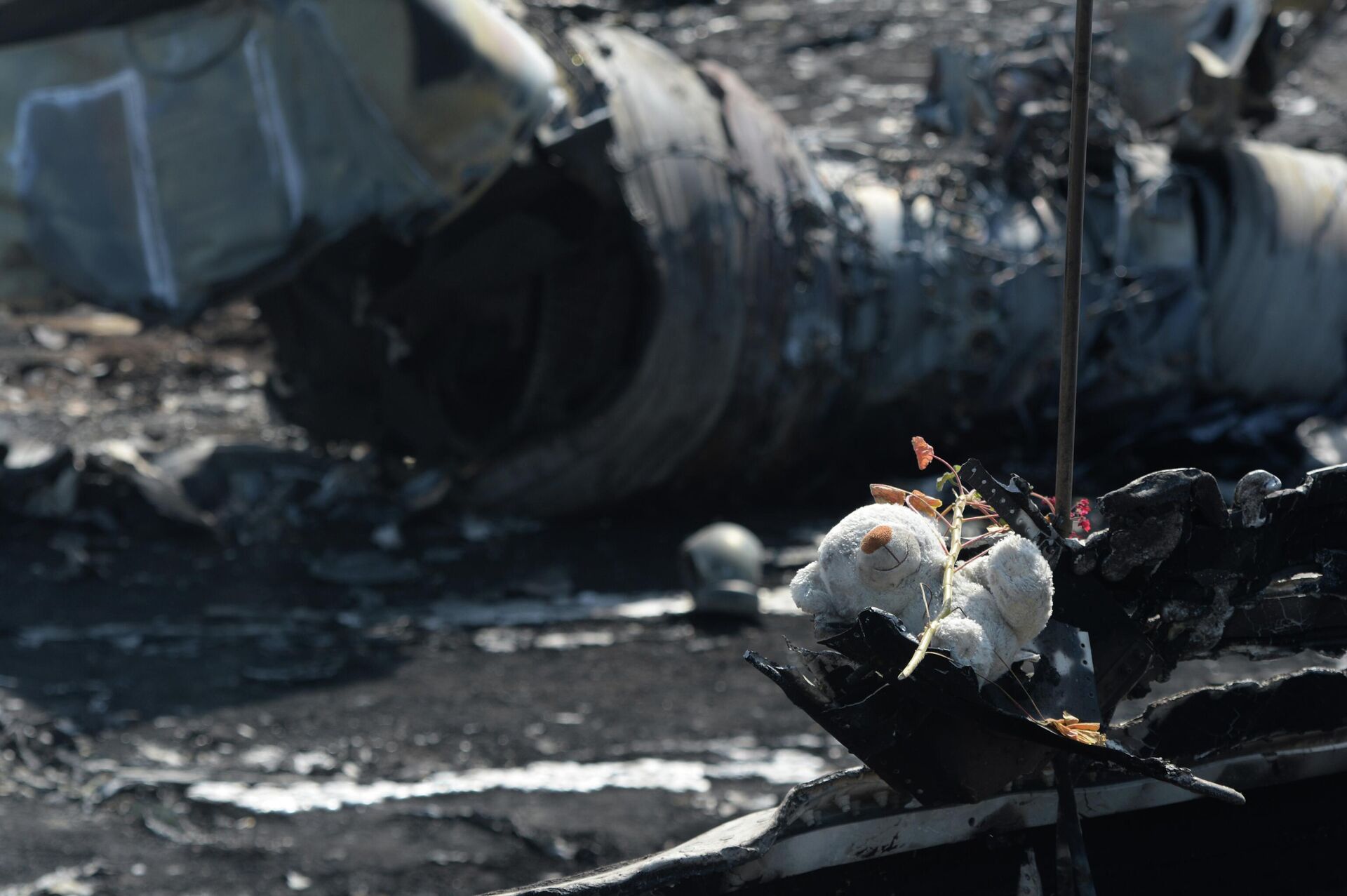
Plush bear at the crash site of Malaysia Airlines Boeing 777 near the village of Grabovo in Donetsk. July 2014.
© Sputnik / Mikhail Voskresensky
/ 15 July 2014: Bombardment of the Settlement of Snezhnoye
At 6:30 in the morning on 15 July, Ukrainian aircraft carried out an air raid on the town of Snezhnoye in Donetsk. 12 people were killed, with nearly a dozen others, including a small child, injured. The missile and bomb attack levelled a five-story residential building on Lenin Street and destroyed the city’s tax administration. Kiev denied involvement, claiming that an “unknown aircraft” bombed the settlement.
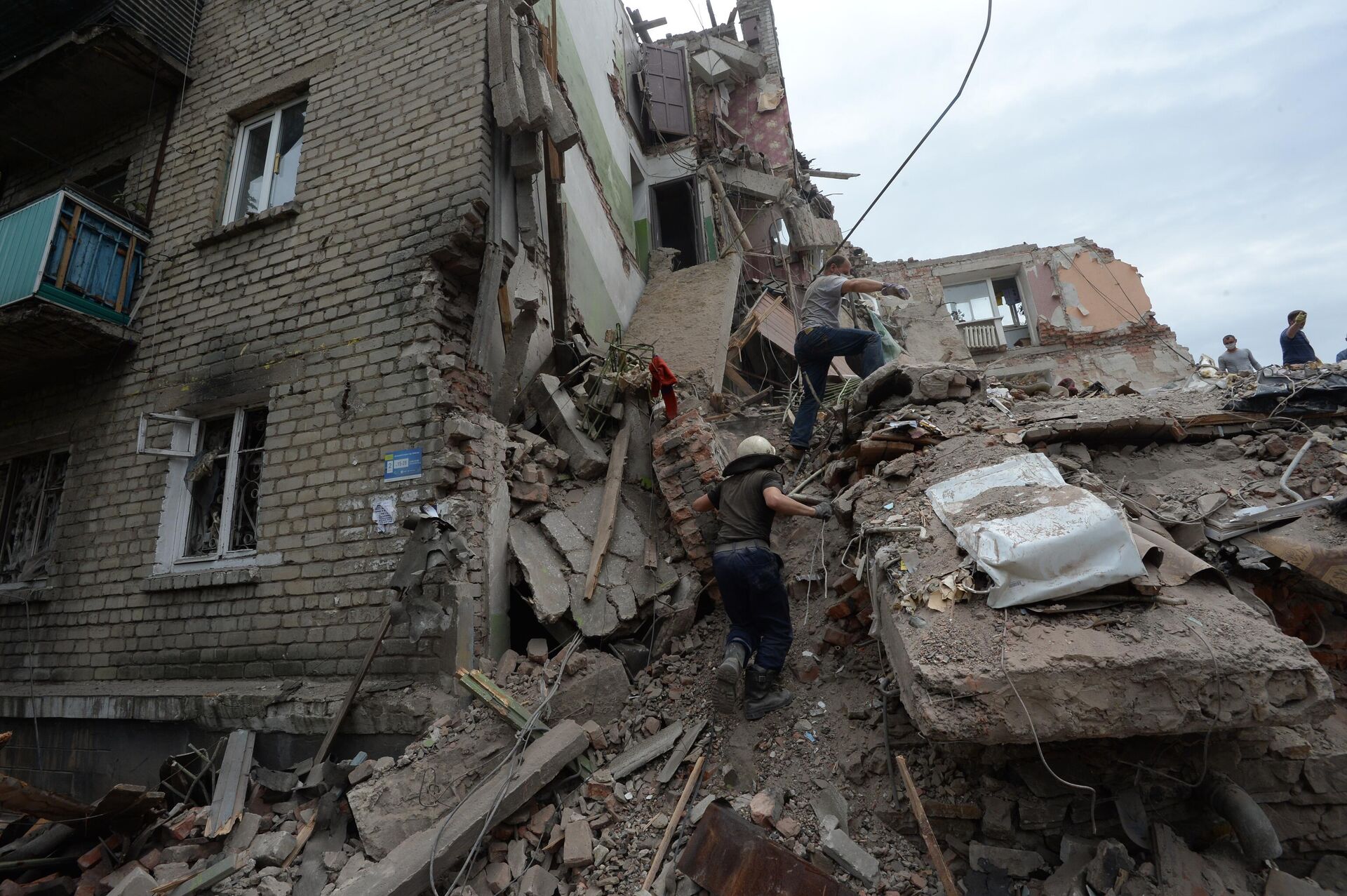
Apartment building destroyed in a Ukrainian air raide in the town of Snezhnoe, Donetsk People's Republic. July 2014.
© Sputnik / Mikhail Voskresensky
/ 13 August 2014: Bombing of a Beach in Zugres, DPR
On 13 August, Ukrainian forces bombed a beach area in the sleepy DPR town of Zugres. 12 civilians were killed and about 40 received injuries of varying severity. An investigation showed that cluster munitions, banned under international law, were used in the attack. An unexploded shell from a BM-30 Smerch MLRS – which has a firing range of between 20 and 70 km, was also found. An analysis of satellite imagery later determined the exact Ukrainian MLRS systems involved – the 1st Division of the 107th Rocket Artillery Regiment of the Ukrainian Armed Forces under the command of Col. A.M. Kelembet.
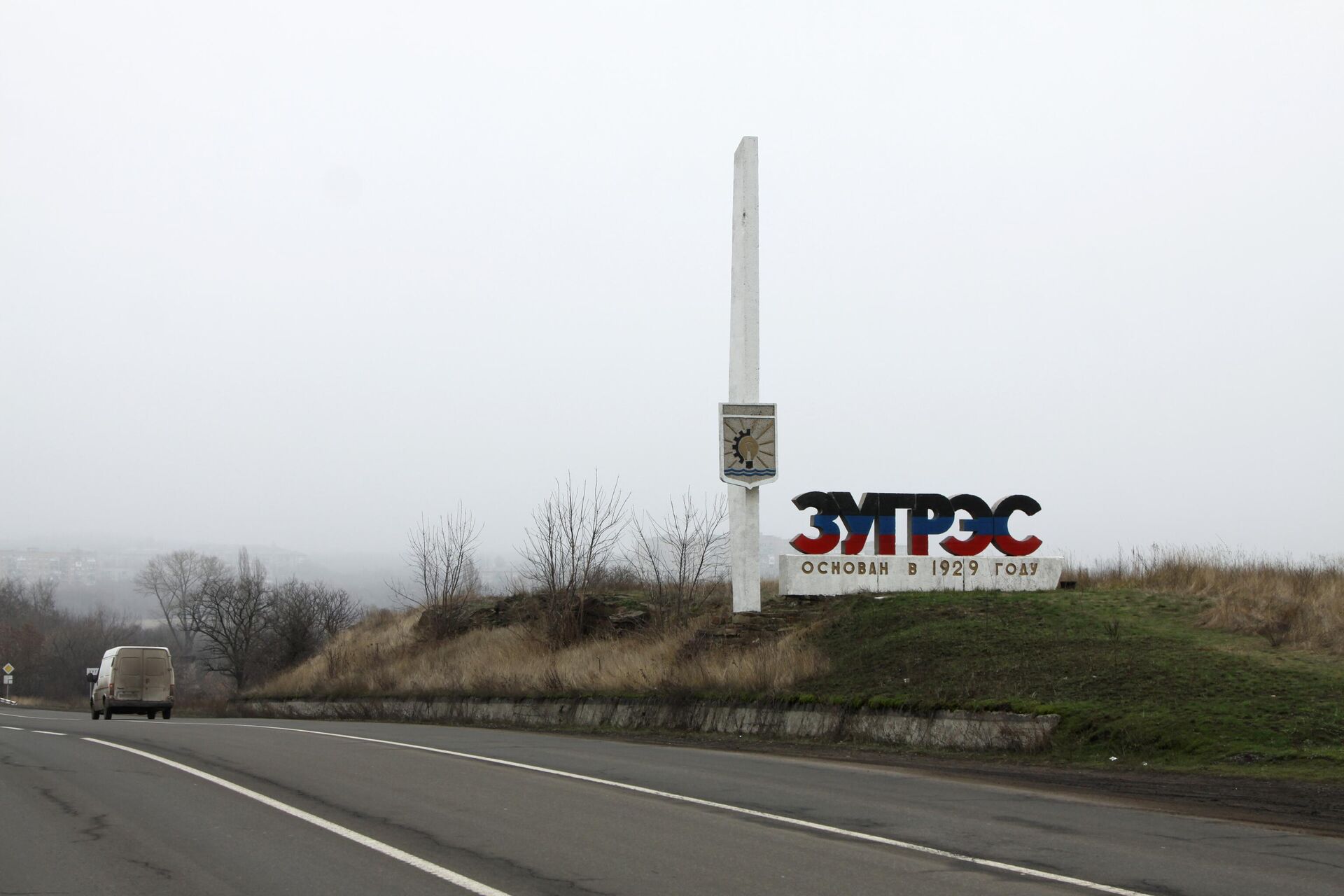
Entrance to the town of Zugres in the Donetsk People's Republic. File photo.
© Sputnik / Sergei Averin
/ 25-28 August 2014: Liberation of Novoazovsk
On 25 August, the Donbass militias began an assault on Novoazovsk, a southern Donetsk region town east of Mariupol on the Azov Sea. Kiev and NATO have claimed that Russian troops were present during the battle and directly involved in the fighting, acting in concert with militias. Russia dismissed these claims as disinformation. Novoazovsk was captured by DPR units on 27 August.
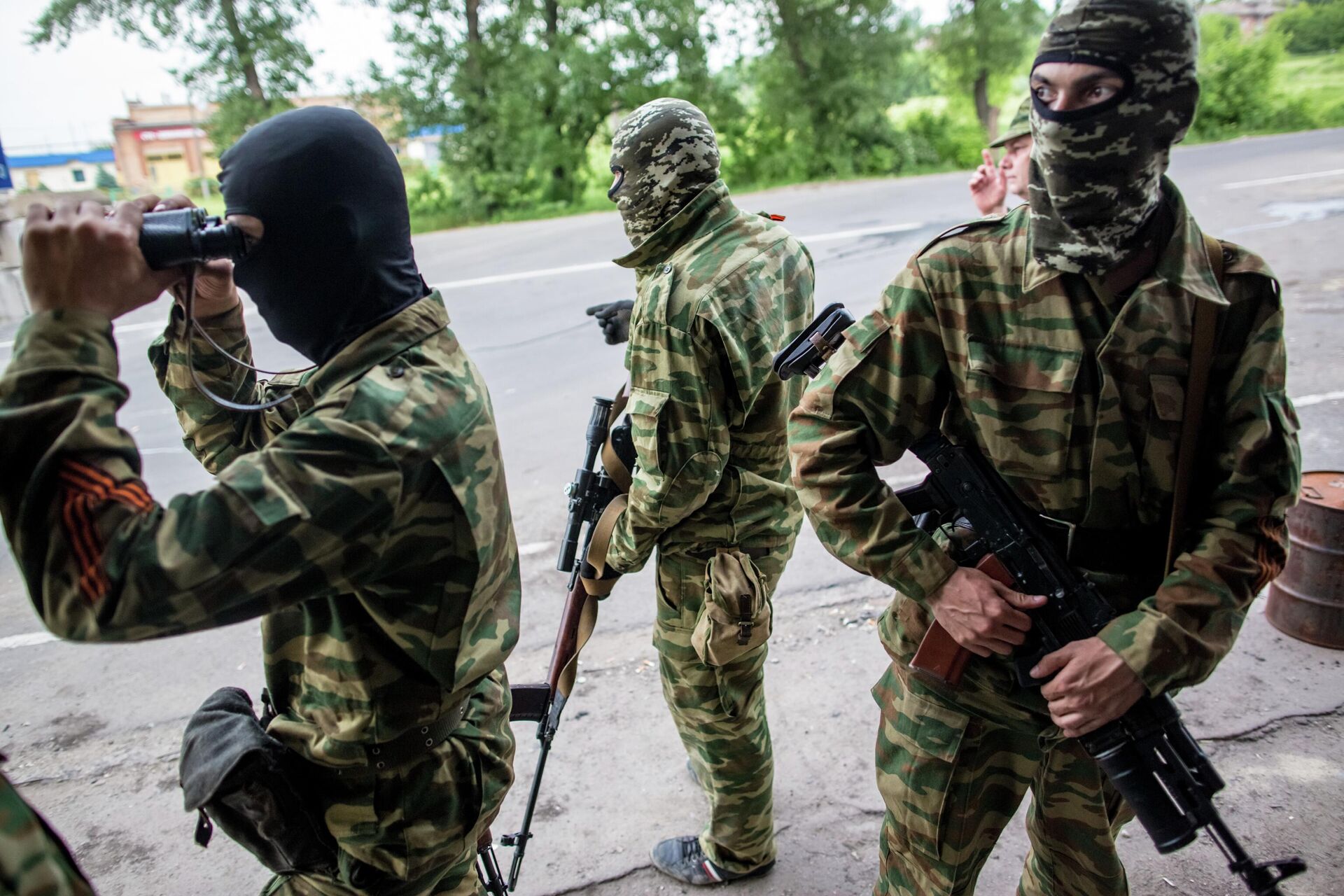
Donbass People's Militia fighters take part in fighting in the village of Semyonovka outside Slavyansk. May 2014.
© Sputnik / Andrei Stenin
/ 5 September 2014: Minsk I
On 5 September, the Minsk Protocol, a ceasefire agreement between Kiev and the Donetsk and Lugansk People’s Republics, was signed in the Belarusian capital. After the agreement was approved, fighting temporarily subsided, but soon resumed with new intensity, with the warring parties essentially ceasing to comply with its terms completely by mid-January 2015.
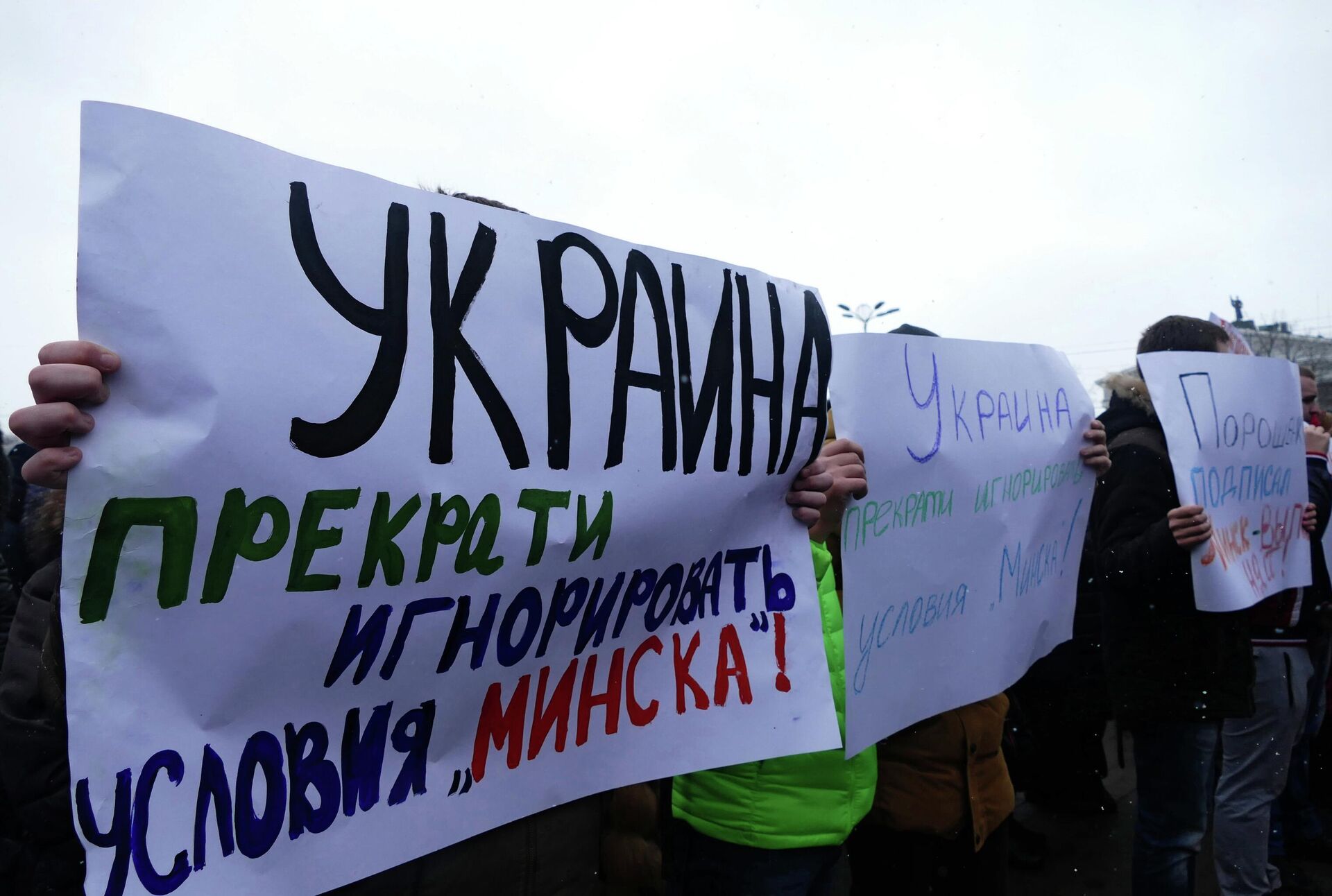
Donetsk residents at a meeting hold up signs appealing to world leaders to end the Ukraine crisis. 2017. Leftmost and middle signs read "Ukraine: Stop ignoring the terms of Minsk!"
© Sputnik / Igor Maslov
/ 22 January 2015: Shelling of a Bus Stop in Donetsk
During the morning rush hour on 22 January 2015, Ukrainian forces fired at a bus stop in the Leninsky district of the city of Donetsk, killing 13 people and injuring dozens of others.

Residents of Donetsk take a victim out of a bus in wake of Ukrainian shelling of a bus stop in the city's Leninsky district. January 2015. Screengrab of Ruptly video.
© Stringer
/ December 2014-February 2015: Battle for Debaltsevo
On 23 January 2015, DPR troops began an offensive on the city of Debaltsevo and its suburb of Uglegorsk, with the urban areas separating Donetsk and Lugansk forces, and ensuring Kiev access to a key road and rail junction.
As DPR troops advanced, LPR forces pinned down the enemy. The Donbass militias advanced towards one another’s positions, eventually encircling Ukrainian forces in a new cauldron. On 12 February 2015, Minsk II, a new attempt at a ceasefire and eventual peace, was signed. A ceasefire was declared beginning on 15 February. In Debaltsevo, the DPR units finished what they started and took the city on 16 February.
Each side threw everything they had into the meat grinder, with some 6,000 Ukrainian troops, including army, National Guard and volunteer battalions involved. Then-DPR chief Alexander Zakharchenko personally took part in and was wounded in the battle. 80 percent of the residential buildings and infrastructure were destroyed, with Kiev accused of deliberately destroying everything in its path as it left using scorched earth tactics.
Casualty figures vary wildly depending on whom you ask. Kiev claims it lost just 267 troops killed. The DPR estimated that some 3,000 Ukrainian troops were killed. The latter also says its own losses amounted to only 30 troops lost. Kiev says nearly 3,800 DPR troops were killed, injured, or taken prisoner in the battle.
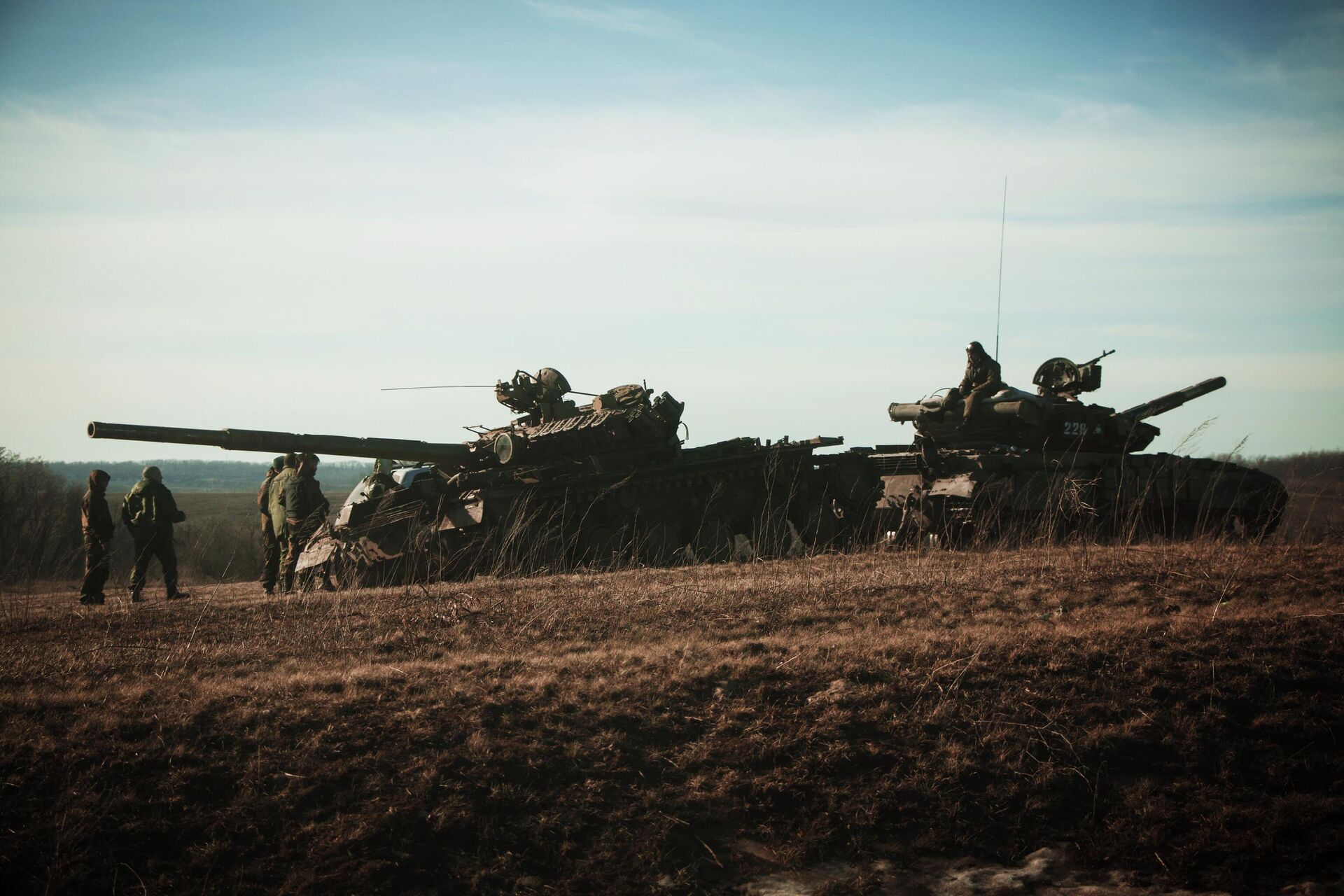
Donetsk People's Republic tanks outside Debaltsevo. February 2015.
© Sputnik / John Trust
/ 2016-2021: Uneasy Ceasefire Punctuated by Bombs, Bullets, and Shelling
After Minsk was signed, the conflict in Donbass transformed into a war of position. Outbursts of hostilities emerged in the areas of Avdeevka and Shirokino in Donetsk, with Kiev forces taking several small settlements along the line of contact, in violation of the agreements.
Between 2016 and 2021, a number of high-profile Donbass militia commanders were killed. Sparta Battalion commander Arseniy Pavlov, better known as Motorola, was killed on 16 October 2016 in the lift of his apartment building in the city of Donetsk, with a homemade bomb attached to the lift going off. Somali Battalion commander Mikhail ‘Givi’ Tolstyh died on 8 February 2017 on the territory of his military unit in Makeevka, DPR in his office, either at the hands of a Shmel man-portable disposable rocket-assisted flamethrower or in an explosion of a planted bomb. Pyatnashka battalion commander Oleg ‘Mamai’ Mamiev received a fatal shrapnel injury in fighting at an industrial zone outside Avdeevka on 17 May 2018. DPR head Alexander Zakharchenko was killed on 31 August 2018 in an explosion at the Separ cafe in central Donetsk.

Memorial event dedicated to Arseniy Pavlov, callsign Motorola, at the Museum of Novorossiya in St. Petersburg, Russia. October 2016.
© Sputnik / Alexei Danichev
/ Fighting during the period after 2015 was not as intensive as before, but the shelling of military positions and civilian settlements in Donbass continued unabated. According to OSCE figures, in 2016 alone over 300,000 violations of the ceasefire were recorded. In 2017, over 401,000 more violations took place, with the OSCE calculating that 479 Donbass civilians were killed that year.
In 2019, over 200,000 additional violations of the ceasefire took place.
On 22 July 2020, the Trilateral Contact Group on Donbass (Ukraine, Russia, and the OSCE) agreed on the terms of an indefinite and comprehensive ceasefire, which stepped into force at midnight on 27 July. However, OSCE monitors later reported that by October of that year, the ceasefire had been violated 1,605 times.
Between August 2021 and February 2022, OSCE monitors recorded another 70,865 violations of the ceasefire.
Factually, notwithstanding the Minsk Agreements, the war in Donbass did not stop throughout the past eight years. People continued to live their lives under the threat of shelling. Some were killed or injured. Others lost their homes.


